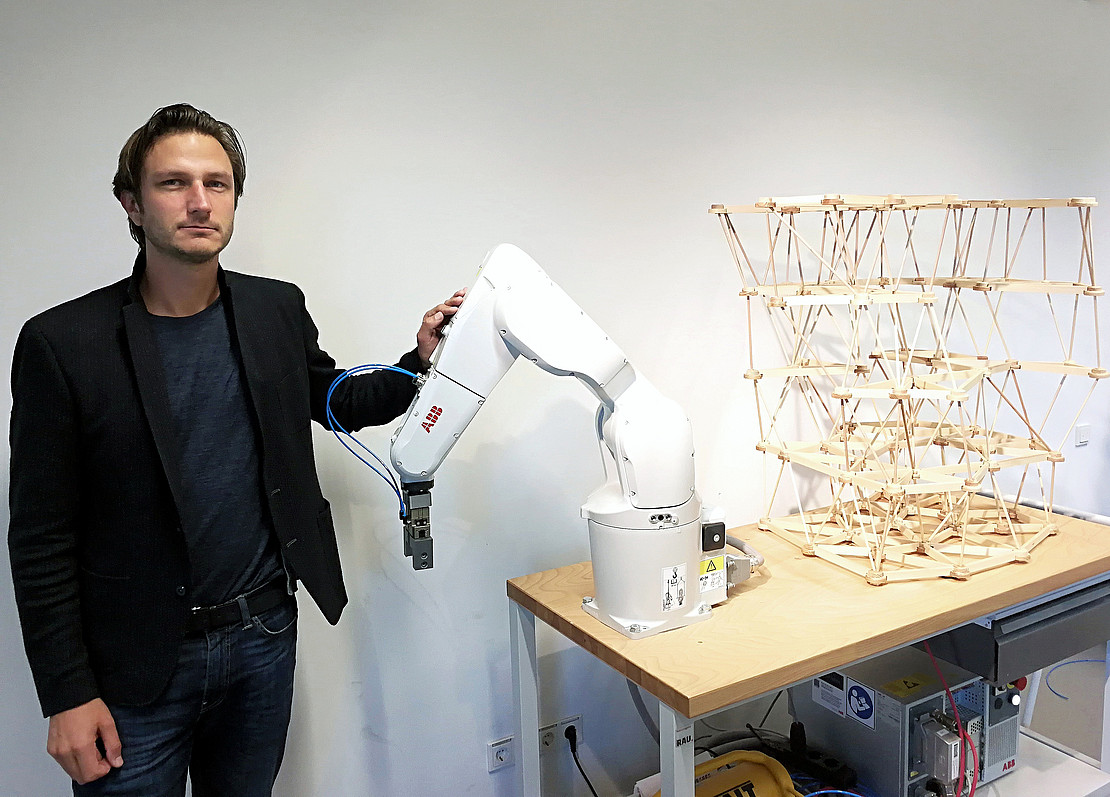This page contains automatically translated content.
Digital Architecture - New Methods in Teaching at the University of Kassel
 Image: Field: Experimental and Digital Design and Construction.
Image: Field: Experimental and Digital Design and Construction."Digital methods are used in almost every architect's office these days in the form of planning software and, for example, 3D printing for model making," says Prof. Philipp Eversmann, head of the Experimental and Digital Design and Construction department and of the architecture firm "Eversmann Studio" in Munich. Digital design and fabrication techniques are therefore already an important part of the training of architects at the University of Kassel.
To expand the spectrum, the department has now acquired two new teaching robots. A robotic research facility with large-scale manufacturing capabilities is to follow. "So far, only a few universities in Germany have such teaching robots related to architecture," says Eversmann. "In our teaching lab, digitally developed designs can be converted into physical models and prototypes." To do this, the robots process wooden parts in various ways, for example, cutting them to size according to geometric requirements and assembling them into new types of digitally designed and manufactured structures. For the development of intuitively usable software and robot grippers for the bachelor students, the project was additionally supported by the Central Learning Support (ZFF) of the University of Kassel. Furthermore, the robots are used for research projects.
The robot offers new spatial possibilities for component development, Eversmann said. "The computer, unlike humans, does not need a reference frame such as a right angle." Robots can place components in space free of geometric constraints. This means, for example, that material can be applied only where it is structurally and functionally necessary, similar to 3D printing.
However, the digitization of architecture does not make human intelligence and creativity superfluous, according to Eversmann, who has already worked on major projects such as the French Ministry of Defense building. On the contrary, new material applications, joining techniques and even spatial arrangements are being creatively created using the new computer-based possibilities. "Our goal is not to digitize already existing building processes, but to develop new building processes with a whole new freedom of design."
Contact:
Prof. Philipp Eversmann
University of Kassel
Department 06 Architecture, Urban and Landscape Planning
Tel: +49 561 804-2352
E-mail: eversmann@asl.uni-kassel.de